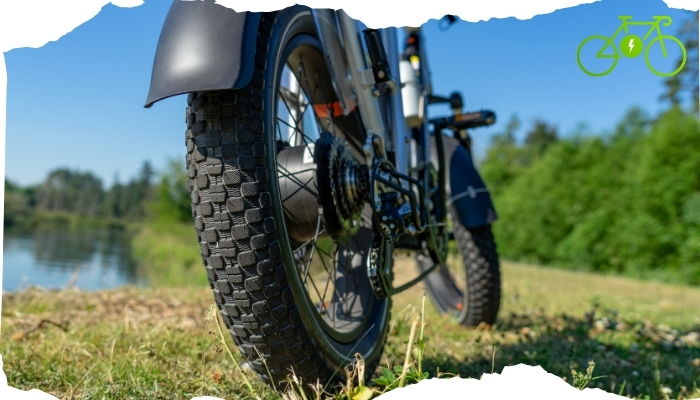Electric bikes, or eBikes, have revolutionized the way we think about commuting, leisure riding, and even fitness. As the popularity of eBikes continues to soar, it’s crucial to understand their various aspects. This comprehensive guide will walk you through everything you need to know about eBikes, from costs and classes to battery life, speed, and riding tips.
Introduction to eBikes
An eBike is a bicycle equipped with an electric motor that assists the rider’s pedaling effort. This assistance can be particularly useful for commuting, tackling hilly terrain, or simply enjoying a leisurely ride without the intense physical exertion required by traditional bikes. Let’s delve into the specifics of eBikes to help you make an informed decision.

How Much is an eBike?
The cost of an eBike can vary widely based on its features, brand, and type. Entry-level eBikes typically start around $1,000, while high-end models can exceed $10,000. Factors influencing the price include motor power, battery capacity, frame material, and additional features like advanced display screens, integrated lighting, and suspension systems.
Understanding eBike Classes
eBikes are classified into three main categories based on their motor assistance capabilities and speed limits:
- Class 1 eBikes: These bikes provide pedal-assist only, without a throttle. The motor assists up to 20 mph.
- Class 2 eBikes: These include a throttle mode, allowing the bike to be powered without pedaling, up to 20 mph.
- Class 3 eBikes: Known as speed pedelecs, these provide pedal-assist up to 28 mph but do not have a throttle mode.
What is a Class 3 eBike?
A Class 3 eBike is designed for those who need to travel faster. It offers pedal assistance up to 28 mph, making it ideal for commuting or covering longer distances quickly. However, due to their higher speeds, they are subject to more regulations, such as age restrictions and mandatory helmet use.
How Long Does an eBike Battery Last?
Battery life is a critical aspect of eBikes, as it determines how far you can ride on a single charge. Several factors influence battery life, including the battery’s capacity (measured in watt-hours), the terrain, rider weight, and level of motor assistance used. On average, an eBike battery can last anywhere from 20 to 70 miles per charge. Regular maintenance and proper charging habits can extend the battery’s lifespan.
Maximizing eBike Battery Life
To get the most out of your eBike’s battery, consider these tips:
- Avoid extreme temperatures: Store and charge your eBike in a cool, dry place.
- Proper charging: Follow the manufacturer’s guidelines for charging. Avoid overcharging or letting the battery drain completely.
- Use pedal-assist modes: Using lower pedal-assist levels can significantly extend battery life.
- Regular maintenance: Keep your bike well-maintained to ensure all components work efficiently.
What is the Fastest eBike?
The speed of an eBike depends on its motor and classification. Class 3 eBikes, which assist up to 28 mph, are the fastest standard eBikes available. However, some custom or off-road eBikes can exceed these speeds, but they may not be legal for road use in many areas.
How to Make Your eBike Faster
If you’re looking to increase your eBike’s speed, consider these options:
- Upgrade the motor: Higher wattage motors can provide more power and speed.
- Optimize the battery: A higher-capacity battery can support faster speeds for longer periods.
- Reduce weight: Lighter components can make your eBike faster and more efficient.
- Regular maintenance: Ensure your bike is in top condition to maximize performance.
How Does an eBike Work?
An eBike combines human power with electric assistance. When you pedal, the motor engages to provide a boost, making it easier to ride, especially uphill or against the wind. The level of assistance can usually be adjusted via a control panel on the handlebars. Some eBikes also have a throttle that allows you to ride without pedaling.
How to Ride an eBike
Riding an eBike is similar to riding a traditional bicycle, with a few additional considerations:
- Start with lower assistance levels: Gradually increase the motor assistance as you get comfortable.
- Use gears effectively: Shift gears to maintain a comfortable pedaling cadence, especially when climbing hills.
- Brake early: eBikes can be heavier and faster, so allow more time to stop.
- Practice safety: Wear a helmet, use lights, and follow local traffic laws.
FAQs
What is the lifespan of an eBike battery?
The lifespan of an eBike battery typically ranges from 2 to 5 years, depending on usage, maintenance, and charging habits.
Can I ride an eBike in the rain?
Yes, most eBikes are designed to be water-resistant. However, it’s essential to avoid submerging the motor and battery components in water.
Do I need a license to ride an eBike?
In most places, eBikes do not require a license, but local regulations can vary, especially for higher-speed Class 3 eBikes.
How often should I service my eBike?
Regular maintenance is key. Aim to service your eBike at least once a year or every 1,000 miles, whichever comes first.
Can I convert my regular bike into an eBike?
Yes, conversion kits are available that can turn a standard bike into an eBike. These kits typically include a motor, battery, and control unit.
Are eBikes environmentally friendly?
eBikes are considered environmentally friendly as they produce no emissions during use and can reduce the reliance on fossil fuels for short trips.
Conclusion
eBikes offer a versatile, efficient, and enjoyable mode of transportation that can cater to a wide range of needs. Whether you’re commuting, exploring, or simply enjoying a ride, understanding the different aspects of eBikes—such as costs, classes, battery life, speed, and riding tips—will help you make the most of this innovative technology. As eBikes continue to evolve, they promise to play a significant role in the future of personal transportation.












